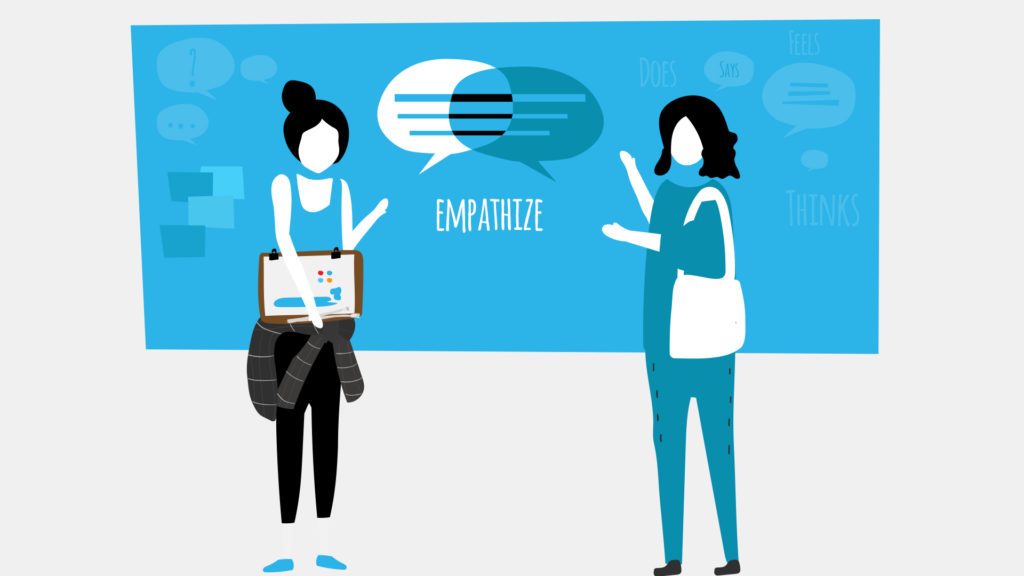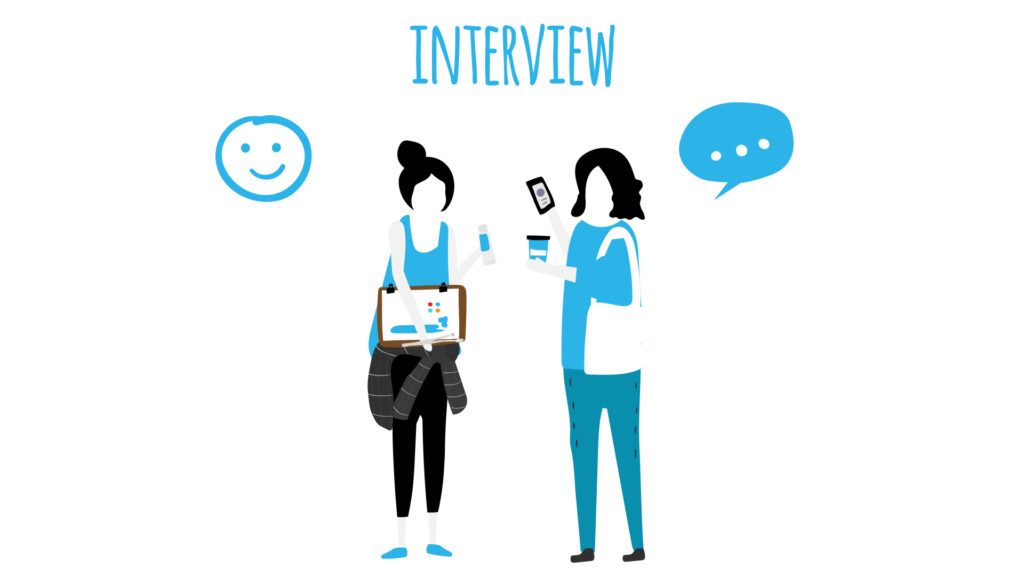From Invisible to Successful – A Design Story
There are no precisely defined processes that lead to well-constructed and beautifully executed design. Designers have the ability to change perspective continually, quickly switching between pretty and useful.
Design Thinking is a design methodology that understands human needs. It allows solving problems in a human-centric way, creating ideas in brainstorming sessions and iterations, and reaching final results through prototype design and testing. According to the human-centered design methodology, it is believed that all problems are solvable and that there are 5 stages the product must go through to solve a particular problem – Empathize, Define, Ideate, Prototype, and Test. This is a non-linear and ever-going process, so when the testing phase is done, one should go back to empathizing, defining new ideas, and making a prototype all over again.
– Ivana Stojanovic
UX&UI Designer at HTEC Group
Empathize

The first stage of Design Thinking uses a wide range of User Research methods. Behavioral methods are based on “what users do”, while the Attitudinal ones depend on “what people say”. Very often in research, we may see that the results and the answers are totally different. A good approach would be to use some methods from each of the categories in order to get more objective results. Usability Studies, Eye-tracking, AB Testing, Clickstream Analysis all belong to the Behavioral category, while the Attitudinal comprises Interviews, Card Sorting, Focus Groups, Email Surveys, among others.
Empathizing is crucial to a design process because people do not buy the product – they buy the experience. Creating a good experience requires careful exploration and detailed studies, considering that utility and usability are two sides of the coin.
Designers are not the end-users. They can never be objective and realistic unless they have previously listened to the needs of the target group. If we were to exclude the creative ego and give a real-life scenario to the users by putting them through it, we would confirm and validate the ideas and the solutions during the process. The following are some of the methods we use on our projects, especially during the phases of exploration of the industry, target audience, and product’s purpose.
Interview

In the process of creating the Experience, meeting the users and conversing with them is fundamental. The reason is apparent – they have the answers to our problems, and we just have to know which questions to ask.
One of the best methods for getting these answers is through interviews and by talking directly to the focus group of users that you are looking to serve. This is an Attitudinal method, with a qualitative (direct) approach. This seems logical as there is no better way of understanding the user’s needs, problems, and opinions on a given subject than by making inquiries. Understanding the personas and empathizing with them is a crucial step that introduces us to a wider picture of possible solutions.
The interview is the first step towards creating user stories, i.e., short statements or abstracts that identify the user, their goal, and define a persona. A user persona is a representation of an average potential user of the product. According to user-centered design, a persona will help the design team to create the design that will target potential users.
Finding a focus group in a natural atmosphere, where the users would feel comfortable answering the questions, and thus providing honest answers, is crucial. The designer conducting the interviews should avoid questions that can be answered with a simple ‘yes’ or ‘no’, and instead make the interview more of a conversation instead of a classic Q&A session. The real focus should be on the people who will use the product and the designers trying to find a solution to the users’ problems.
Empathy Mapping

When the focus groups are not physically present, e.g., they are not geographically available to the design team, other approaches can be used for empathizing. One of the available methods is Empathy Mapping – a mix of behavioral and attitudinal methods where what the user says and does has to be mapped out. This kind of mapping is based on assumptions that later on have to be validated through user research.
On one of our projects, the design team had the task of improving a marketing agency website, and using the Empathy Mapping method tried to map out what the users Said, Did, Thought, and Felt (four quadrants on a whiteboard, which reflect four key traits). Based on their previous experience and using their imagination they were able to construct the key Personas in their audience. This particular method is excellent for defining insights and producing new concepts to solve current problems in innovative ways.
Card Sorting
Card Sorting is the best solution and a very easy way to define the Information Architecture for a website or an application. Cards or paper notes which contain all the content that needs to be prioritized are in random order given to a potential user to organize. Asking the user to think aloud while organizing the cards helps to understand what they want to see and what they are thinking. This procedure helps the structuring of content – what should be up-front, what comes second, what seems unnecessary, and maybe what is missing.
This method was used to create the information structure of the Career page we designed for one of our client’s websites. The focus group consisted of several interns (who were students or graduates at the time), and a couple of employees of different seniority, who have been employed by the company for different amounts of time and on different contracts. Participants were asked to organize the sticky notes with the content (Open Positions, Internships, Culture, Benefits, What Makes Us Different, etc.), and although the priorities varied from one profile to another, a noticed a clear pattern that helped us define the structure of the section of the website.
Continual testing of prototypes and integration of these findings can help us reach optimal solutions. Focusing on user needs and defining the level of their motivation can teach us how the product can be helpful to the users and can help us determine where the user stands in the Hierarchy of Needs. Using these insights we can overcome the challenges that come with creating designs that appeal to their target audience.
Conclusion
All the aforementioned methods aim to help designers learn how to use the experience and the feelings of the people and integrate them into useful digital solutions. Design Thinking can make these intelligent solutions improve the human condition. Moreover, good practices and carefully chosen methodologies are the keys to successful products which can easily and continually adapt to the human experience.





